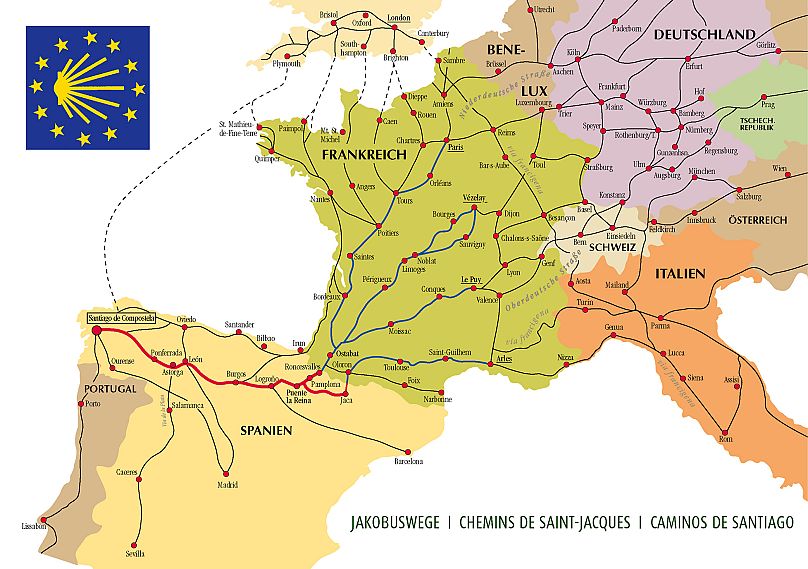What a piece of seafood tells us about the EU's shared identity.
The waters of the English channel have calmed following the ugly scenes between British and French fisherman skirmishing over the right to harvest the sea bed.
The battle is now being fought in embassies and council chambers as diplomats take on the cause of their voters in a dispute which seems to epitomise the fracturing of Europe following the Brexit vote.
However, the term scallop, in fact, epitomises the spirit of partnership which the European Union was intended to embody and promote.
As English fishermen complain about the behaviour of their counterparts across the sea, they may not know that they are borrowing from the French language to do it. "Scallop" derives from the French word: "escalope", which in turn is borrowed from the German "schalle" (shell or in this case shell), although in French (and as adopted by the Spanish) it also defines a slice of meat.
The mollusk of Santiago
In France the scallop is known as a "coquille de Saint-Jaques", the shell of St James, drawing on its history as a symbol of pilgrims heading to Santiago de Compostela.
The Germans draw on the same roots to call the shellfish a "jakobsmuscheln" or "pilgermuscheln" (James' mollusc or mollusc of pilgrims) and the Italians, "conchiglia di San Giacomo". The Dutch, with their "sint-jakobsschelp", and the Poles - "Małże Świątego Jakuba" - have similar traditions.
In Italian it is also known as "cappasanta", because the shell was hung on the capes of pilgrims returning from Galicia to show that they had completed the Way.
The routes connecting pilgrims with the Spanish shrine form an ancient network which predates by centuries the borders which the European Union now sits across.
Venus’ shell
In Spain itself, however, the holy shrine is not linked with the common name for a scallop.
In fact the word scallop is of Galician origin (vieiria), now shortened to viera and can be traced back to veneria or venerea, according to the Royal Galician Academy, a reference to the goddess Venus, who in mythology is frequently represented as being born from a shell that resembles that of a scallop.
Some other etymologists argue that the word's origin could be from from via, the Latin for a way or route.
They shells likely became linked with the pilgrimage site because they are commonly found on the nearby coast.
The sea comb
Other names are derived from the scientific name for the shellfish "pecten maximus", from the Latin term "comb" (which in turn comes from the ancient Greek πέκω, πεκτέω, (pékô), (pektô). It is known in Russian and Hungarian as the sea comb "Морские гребешки" and "fésűkagyló" respectively.
Where Europe's seafood has the potential to divide, it can unite as well.












